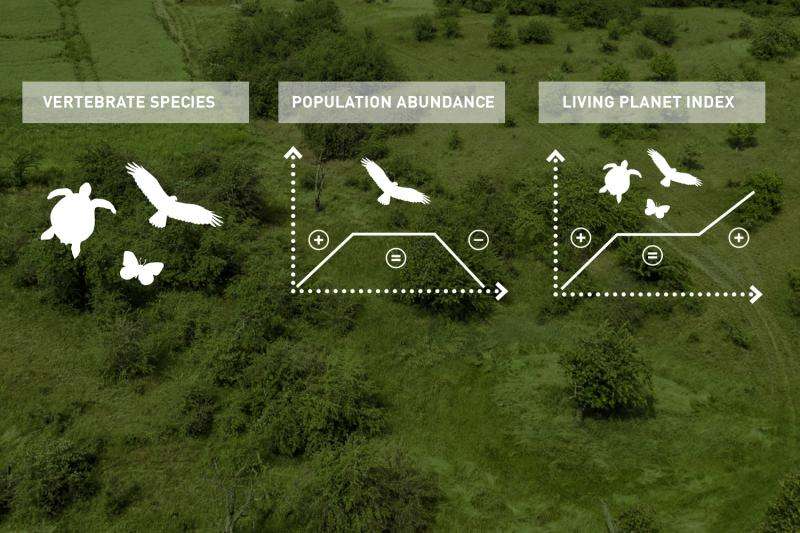Researchers compare biodiversity trends with the stock market

Essential Biodiversity Variables (EBVs) have the potential to help stop species loss. An international research team is using an analogy to explain what these variables are. Just as the price of a share varies according to supply and demand and the prices of all individual shares are used to calculate the index of a stock exchange, data from observations of nature is used to calculate biodiversity variables. From these it is possible to calculate indices which are crucial to policy decisions. By using this analogy, the researchers aim to show how important EBVs are to the protection of biodiversity and where efforts in this area are being hampered by global gaps in our knowledge.
In its history, the Earth has experienced five major species extinctions. Researchers believe that we are now witnessing a sixth extinction event, with thousands of species disappearing every year. To counter this massive species loss, 193 countries – including Germany – signed the UN Biodiversity Convention, committing themselves to halting the loss of biodiversity by 2020. But compared with climate change, the data on changes in biodiversity is fairly thin – and without data, this target cannot be implemented or verified. So in 2013, GEO BON (Group of Earth Observation Biodiversity Observation Network) – an international initiative which carries out monitoring and compiles data on global biodiversity – developed the concept of Essential Biodiversity Variables (EBVs). The international GEO BON office is located at the German Centre for Integrative Biodiversity Research (iDiv) in Leipzig.
"At the beginning there was a lot of hype surrounding the biodiversity variables," says UFZ researcher Dr. Dirk Schmeller. "There was widespread discussion about them, but many people don't really understand what they are and what they can do." Since this is precisely what environmental policymakers need to know, an international research team led by the ecologists and conservation researchers in Leipzig has now published a study in which they use an analogy, comparing the biodiversity variables with share prices (Brummitt et al.).
Similarly to the way in which the index of a stock exchange is calculated from the prices of all individual shares, a biodiversity index contains information from one or several individual biodiversity variables. The researchers explain this using the example of the Living Planet Index (LPI), an indicator of the global population of vertebrates. Scientists worldwide monitor fish, amphibians, reptiles, birds and mammals living on land, in the oceans and in freshwater. The species correspond to the shares listed on a stock exchange, which belong to different companies. Just as the price of a share rises or falls according to supply and demand from shareholders, individual populations grow or shrink over time. The parameter of 'abundance', or the number of individuals of a particular species in a given habitat over time, provides the corresponding biodiversity variable – just as the share price describes the value of a share. From the individual EBVs, scientists can then calculate other indices such as the Living Planet Index.
"The EBVs are the link between the raw data and the indices," explains Schmeller. "They enable us to document critical changes in biodiversity and provide the data basis on which politically relevant indices can be calculated, so that appropriate decisions can be made." As a result they are extremely important to conservation policy, as a second study shows (Proenca et al.). In this study, the researchers describe how EBVs not only help to organise data but also identify where there are gaps in our knowledge. "So we can say to decision-makers, we need more monitoring or more capacity in this or that area," says Schmeller.
In a third study (Turak et al.), researchers have demonstrated how the concept of biodiversity variables can be implemented in practice, at least at regional level. They asked what kind of information environmental policymakers need and which EBVs supply the necessary data. Using this approach, the researchers identified eleven EBVs for the state of New South Wales in Australia which can detect changes in the native fauna and flora.
"The tricky thing is that there are still no global data standards," the ecologist continues. "It's like comparing a mouse with an elephant." To fill the knowledge gaps in global biodiversity, the data and the way it is gathered will need to be standardised so that it can be compared. The data collected, but not published, by local and national authorities also needs to be made globally available. And finally, more monitoring must take place – especially in areas of the world where little is known about the level of biodiversity.
"It will take a few years before everything works in the way we envisage," says Schmeller. But he is nonetheless optimistic: "The more information we can provide about biodiversity, the more it will influence policy decisions – even though biodiversity still often takes a back seat where economic affairs are concerned."
More information: Neil Brummitt et al. Taking stock of nature: Essential biodiversity variables explained, Biological Conservation (2016). DOI: 10.1016/j.biocon.2016.09.006
Journal information: Biological Conservation
Provided by Helmholtz Association of German Research Centres














